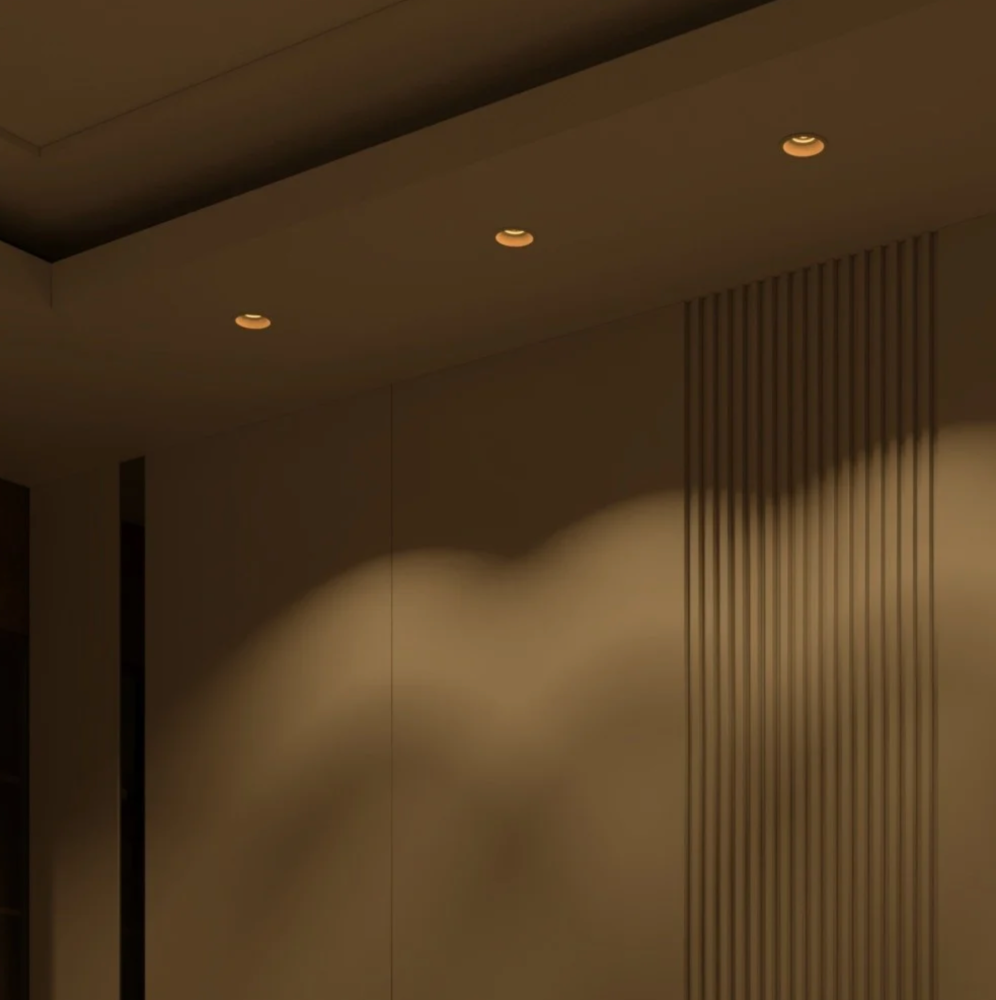Lighting distribution in our different spaces is essential to complete its elegance, and ideal modern lighting begins with using spotlights and distributing them appropriately.
Let us guide you on how to properly distribute lighting using spotlights in a few lines.
The importance of spotlights in lighting distribution
Spotlights are one of the simplest forms of lighting in any space, and are considered one of the latest ways to illuminate homes in an attractive, modern way.
It is also simple in shape and does not require coordination with other décor styles. It is suitable for all décor styles and can be used in various rooms of the home, as well as in shops, malls, cafes, and more.
One of the reasons it is preferred by interior designers is that it does not take up any space, yet provides strong lighting.
It's also very easy to install certain types of spotlights on ceilings, plasterboard, or even in lighting fixtures, and the bulbs can be easily changed at any time!
Another important feature is that the spotlight is always LED, which saves energy and significantly reduces electricity consumption.
Types of spotlights for proper home lighting planning
A spotlight is a light fixture that always has a specific center or point of illumination.
Its type varies depending on its lighting angle, whether wide or narrow, and it has uses that we will explain in the following headings...
The first type is the fixed ceiling downlight, which is a common and basic shape that you always find in all homes.
The second type is the recessed or retractable ceiling spotlight, which always serves a purpose in home decor.
Track lights are sometimes used for magnetic lighting , and are highly flexible for illuminating spaces and modern home decor.
The third type is a wall-mounted spotlight that can be moved and changed direction with complete ease.
What is the difference between spotlight and downlight?
The difference is subtle here, but it is very important when distributing home lighting!
The spotlight provides highly concentrated illumination at a narrow angle of between 10 and 15 degrees, and can be moved in all directions and focused on any decorative element to highlight its features.
In contrast, a downlight has a slightly wider illumination angle, is a stronger, fixed light directed only downwards, and can provide a general illumination of the space.
Each of them has a specific use that we will talk about in detail...
Proper distribution of spotlight lighting
The distribution of spotlights on the ceiling always depends on what it is directed at...
For spotlights or track lighting , we first pay attention to the locations of important or decorative elements;
For example, paintings, statues, dining tables, consoles, mirrors, etc., and then we install lighting directed at them.
You should always consider seating areas and sofas and keep spotlights away from them. They should not be placed directly above you, so as not to disturb those sitting there and cause them to have blurred vision!
Downlights are ideal for diffused lighting and general illumination, so you can use them in the middle of a room, inside cabinets, and above an open kitchen island .
Calculating the appropriate number of spotlights
The number of spotlights in the house is distributed according to the area, using a simple equation...
Room length (room width) ÷ 2 equals the number of spotlights!
But what is the correct distance between each spotlight?
One of the most important points to pay attention to is the distance of the spotlights from each other and from the wall...
One expert said that the distance between each spotlight = room width ÷ number of spotlights
We repeat this with the length of the room to know the number of lamps in length and width...
But how far should the spotlight be from the wall? The distance between the spotlight and the adjacent wall is half the distance between each spotlight.
It is always preferable to keep a distance of at least one meter, so as not to distort the appearance of the walls or cause visual disturbance.
Spotlight distribution errors
- Randomly distributing spotlights at uneven distances creates inconsistent effects on the walls, distorting the overall appearance.
- Excessive lighting and excessive number of lights can cause headaches and increase energy consumption.
- Using spotlights with different lighting levels together creates an imbalance in your home's lighting and increases the feeling of discomfort.
- Use a spotlight that does not reflect glare, so always choose the best spotlight with a glare-free spotlight frame , such as black or silver.
- Instead of relying on spotlights alone, you should also use general lighting with them, whether it's a downlight or a chandelier, for example. They complement each other without overusing one over the other.

